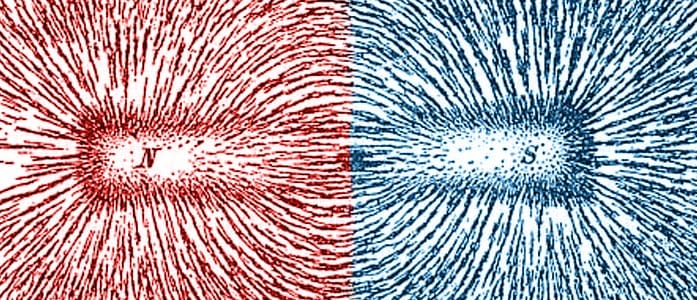Only a matter of time
If you were—at the time of writing at least—to visit the homepage of this publication then you would see large text “The Human In The Machine” followed by an image. The image depicts a wide rectangle split into two sides, one red with the letter N and one blue with the letter S. The rest of the image is full of lines arching symmetrically between the two sides.
A lodestone is naturally magnetised iron ore. Exactly when lodestones were discovered is unknown, though legend credits Magnes the shepherd. It appears that Thales (c. 624 BC – c. 546 BC) was one of the first to consider how magnetism was possible, according to Aristotle he attributed it to magnets having souls. The Chinese book Lunheng was published in the first century, it contained essays by Wang Chong including writings about lodestones attracting needles—the invention of the compass.
Fast forward roughly 2400 years after Thales to 1851, Victorian London. Underneath what is now one of the most prestigious lecture halls in the world, Michael Faraday discovered his “Lines of Force” (magnetic field lines) in the basement of the Royal Institute. Surprise, magnets do not have souls. Despite already being used in compasses for navigation, and theories about the earth itself being magnetic, it took over 2 millennia and the mind of a genius to invent an experiment—using a magnet and iron fillings—that nowadays children do at school.
Today technology is moving rapidly, so much so that it feels like society is disappointed when products take longer to release than expected. Not everything can or should be rushed. How often have you said something would take 10 minutes, to still be trying to figure it out an hour later?
If somebody does something that appears easy, we blame ourselves for not figuring it out. If we take longer than expected, we often take the blame for not figuring it out quick enough. Visualising magnetic field lines, using a magnet on iron filings, took 2400 years and by the time Michael Faraday had tried it he had already: invented one of the first electric motors, invented the Faraday Cage, theorised ions, and discovered electromagnetic induction.
Give yourself a break, sometimes it is the seemingly easiest things that take the longest.
